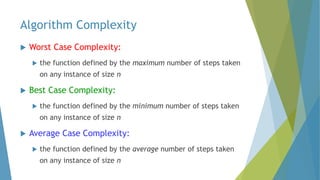This document outlines a course on programming and data structures in C. It discusses key concepts like abstract data types, asymptotic analysis, various data structures like arrays, stacks, queues, linked lists, trees, and graphs. It covers different algorithms for searching, sorting and indexing of data. The objectives are to learn a program-independent view of data structures and their usage in algorithms. Various data structures, their representations and associated operations are explained. Methods for analyzing algorithms to determine their time and space complexity are also presented.
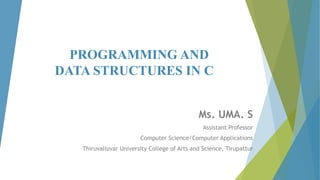
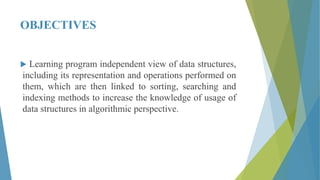

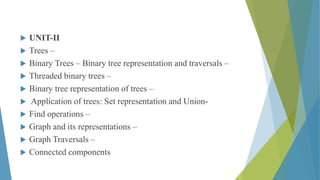
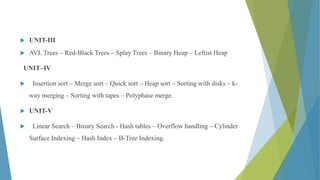
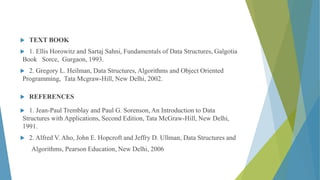





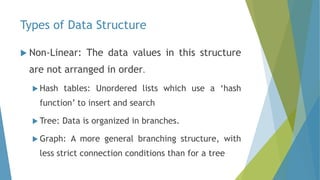
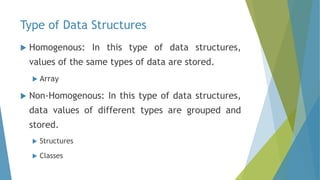








![22
Algorithm Analysis: Example
Alg.: MIN (a[1], …, a[n])
m ← a[1];
for i ← 2 to n
if a[i] < m
then m ← a[i];](https://image.slidesharecdn.com/tvudsunit1-240206160527-794a60f6/85/Data-Structures-unit-I-Introduction-data-types-22-320.jpg)
![ Running time:
the number of primitive operations (steps) executed
before termination
T(n) =1 [first step] + (n) [for loop] + (n-1) [if
condition] +
(n-1) [the assignment in then] = 3n - 1](https://image.slidesharecdn.com/tvudsunit1-240206160527-794a60f6/85/Data-Structures-unit-I-Introduction-data-types-23-320.jpg)








